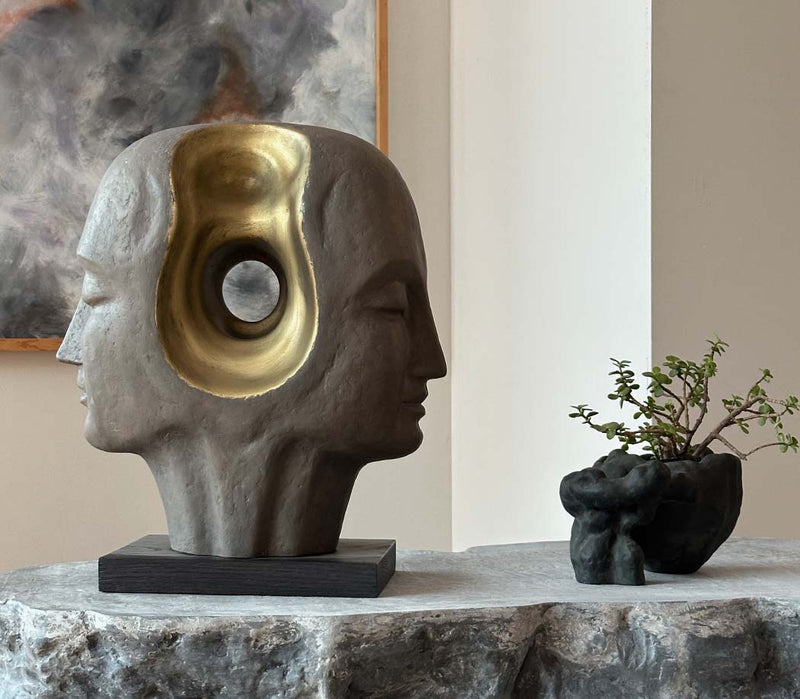The Indian culture is the epitome of intertwining art with philosophy, cloaked with wisdom and divinity. Our current day and age has detached itself from the spirituality of indian classical—yet it lies somewhere within us. The tune of the flute and the rhythm of the footsteps of Bharatnatyam, we find ourselves soothed and tapped into the divine ambiance.
Today, we tell the tale of a sage who breathed life into performance, one who transformed expression into a sacred offering. The celestial rishi to whom the roots of indian classical performing arts trace their origin—Rishi Bharat Muni.
Bharat Muni – The Chosen Sage
The world was getting crushed by the grip of adharma. The grey clouds of chaos hovered over, and the minds of people and youth were sliding into darkness. The gods turned to Bhrama, the creator, for help. Moved by their plea, Bhrama summoned from the Vedas a fifth scripture – The Natyashastra, a divine scripture of performance art, encompassing dance, drama, and music.
Bhrama entrusted Bharat Muni to bring this treatise to Earth, hence the chosen sage. He did not just teach the Natyashastra as a manual, but as an embodiment of the universe's truth — anubhava.
The Natyashastra: Cosmic Manual of Art
An alchemical manuscript of spirit and form. Not just an old treatise on dramaturgy—the Natyashastra is the cosmic manual of art, across nearly 6000 verses divided into 36 or more chapters. The Natyashastra outlines the foundation of Natya — a form of performance that encapsulates storytelling, movement, music, and mood, unifying the senses and the soul.
Bharat Muni describes Natya as the mirror of the world — not a mere imitation but a distillation of life, emotion, and metaphysical truth. According to him, this art's purpose is dual - to entertain and enlighten.
The Natyashastra speaks of:
-
Rasa (Essence of Emotion) — The heartbeat of performance. Bharat Muni unveiled the eight Rasas (later expanded to nine), including Shringara (love), Raudra (anger), Karuna (compassion), and Adbhuta (wonder). Each Rasa is a cosmic vibration, a gateway to human connection.
-
Bhava (Emotional States) — The internal mood that gives birth to Rasa, reflecting the performer’s psychological depth.
-
Mudras (Hand Gestures) — The symbolic language through which words dissolve, and the divine communicates.
-
Abhinaya (Expression) — Divided into angika (bodily), vachika (verbal), aharya (costume), and sattvika (spiritual), revealing that performance is a multi-dimensional offering.
Thus, art was never about simply being performed but rather about being invoked.
The Performer as a Vessel of the Divine
Bharat Muni never believed in describing a performer as just an artist but as someone who radiated spiritual or divine meanings with every drop of talent they carried within. When a performer becomes Natyacharya—the teacher—the body becomes an instrument—the voice, a mantra, the eyes, the oceans of meanings.
He envisioned the stage as a symbolic universe, where gods walked among mortals. Every story performed was more than myth — it was a re-enactment of cosmic order, a dharmic dance of truth over illusion.
Dance as Cosmic Motion
Dance has been a deeply integrated form of art in our mythology. The Shiva Tandava, Parvati’s Lalit Marmik are two of the popularly known dance forms, and both display a plethora of emotions one feels, be it love or anger.
One of Bharat Muni’s most significant contributions was to intertwine Natya and Nritya—theatre and dance; hence, one who danced now was the speaker of the cosmic language.
In classical forms like Bharatanatyam, Kathakali, and Odissi, echoes of Bharat Muni’s teachings ripple through every mudra and melody. The Natyashastra’s intricate movement vocabulary continues to shape how dancers align their inner cosmos with the world around them.
How their bodies soar and express emotions through an art form that carries both grace and fury. How beautifully the universe must’ve thought when it breathed dance into our lives as a language—one that speaks through the flows of the body, the vessel that carries us till death.
The Echo That Never Fades
Centuries may have passed, dynasties risen and fallen, yet Bharat Muni’s echo resonates still. His teachings form the core of India's classical performing arts, influencing not only the stage but cinema, literature, and even psychology.
Bharat Muni was one of the first to explain how emotions and art are connected. He beautifully showed how art can touch our feelings, help us find emotional release, and even guide us toward becoming better and more thoughtful human beings.
Today, when artists light the lamp before a performance, they are not just beginning a show — they are invoking Bharat Muni’s spirit. They are stepping into a timeless dialogue between heaven and earth, mediated by art. He who taught us what art really meant—how can performative events begin without his presence? Would be bizarre!
Conclusion: A Legacy Beyond Time
To speak of Bharat Muni is to speak of an origin myth — not of mere history, but of sacred storytelling. In his words, art is not born of ego, but of purpose; not performed for fame, but for internal bliss.
That there is no chase of perfection but to express whatever’s within and whatever the universe’s asking to convey through the artist into the physical world.
Natyashastra remains a celestial guide for those who dare to walk down the path of performance, reminding us that to perform is to pray, to witness is to awaken, and to feel deeply and truly is the highest offering.
So, whether you’re an artist or an audience, Bharat Muni’s legacy projects upon wherever there’s a connection with theatrical art. Like a distant constellation, always there.

